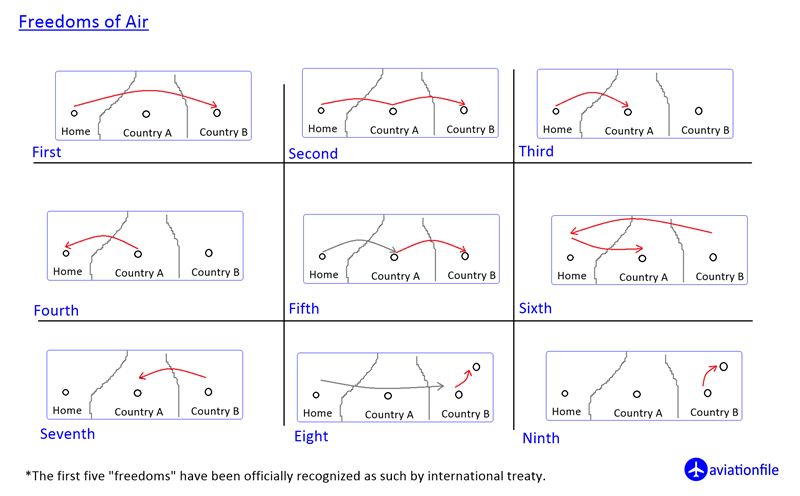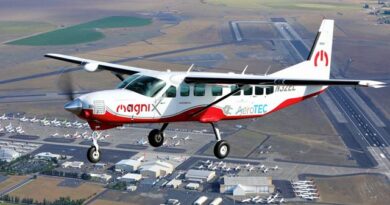Understanding the Freedoms of the Air: Key International Aviation Rights
The “Freedoms of the Air” are fundamental rights established to regulate international air transport. These freedoms, first outlined in the 1944 Chicago Convention, define how airlines operate across borders, impacting global connectivity and commerce. Below, we’ll explore each of these freedoms, focusing on the first five that are universally adopted.
What Are the Freedoms of the Air?
The “Freedoms of the Air” are nine specific rights granted to airlines, with each freedom allowing varying levels of access to foreign airspace and airports. Only the first five freedoms are widely adopted globally, as these facilitate international connectivity and trade (ICAO, McGill University).

1. First Freedom: Right of Overflight
The First Freedom allows airlines to fly over a foreign country without landing. This right, granted under the International Air Services Transit Agreement (IASTA), simplifies routing and reduces costs for international flights without requiring a stopover (ICAO, Wikipedia).
2. Second Freedom: Technical Landing Rights
The Second Freedom allows airlines to make a technical landing in a foreign country for refueling or maintenance. This stopover does not permit commercial activity, such as loading or unloading passengers or cargo (ICAO).
3. Third Freedom: Right to Offload Passengers and Cargo
The Third Freedom allows an airline to transport passengers and cargo from its home country to another. This right is critical for establishing direct commercial routes between two countries (AHA).
4. Fourth Freedom: Right to Pick Up Passengers and Cargo
The Fourth Freedom complements the third by allowing airlines to carry passengers and cargo from a foreign country back to their home country. Together, the third and fourth freedoms form the backbone of most international airline routes (Wikipedia, AHA).
5. Fifth Freedom: Multi-Stop Transport Rights
The Fifth Freedom allows airlines to pick up and drop off passengers or cargo in a foreign country as part of a longer international route. For example, an airline from Country A can fly to Country B, pick up passengers, and continue to Country C. This freedom supports extensive international networks and promotes economic exchange (ICAO, AHA).
Beyond the Core Freedoms: Sixth to Ninth Freedoms
Freedoms six through nine are advanced commercial rights. While less common, they allow airlines greater flexibility:
- Sixth Freedom: Allows a carrier to move passengers or cargo between two foreign countries through its home country.
- Seventh Freedom: Allows direct service between two foreign countries without returning to the airline’s home base.
- Eighth Freedom: Permits transport within a foreign country as part of a service originating from the airline’s home country.
- Ninth Freedom: Known as “cabotage,” this allows an airline to operate entirely within a foreign country, which is often restricted to protect domestic marketsWikipediaMcGill University.
Why These Freedoms Matter
The Freedoms of the Air enable smoother international travel, allowing airlines to expand routes, cut travel times, and reduce operational costs. While the first five freedoms are essential for global connectivity, the latter freedoms are typically restricted and negotiated bilaterally, as they impact national markets and aviation sovereignty (ICAO, AHA).
Key Takeaways
- The first five freedoms of the air facilitate direct international travel and are broadly recognized.
- The sixth through ninth freedoms offer extensive rights but are rarely granted due to economic and regulatory concerns.
- These freedoms structure the global aviation industry, balancing open access with national sovereignty.
For more detailed insights, refer to the International Civil Aviation Organization (ICAO) and authoritative aviation resources (ICAO, Wikipedia).


